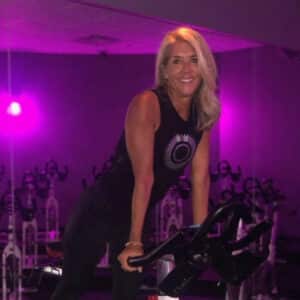What do strength, flexibility, and balance have in common? They are all things we lose as we get older. Hormonal fluctuations, poor posture, and years of wear and tear on our joints can all affect how the body moves and performs as it ages. Pilates can address these and other issues, resulting in an improved functional fitness level. Developed by the German-born Joseph Pilates in the 1920s, Pilates strengthens and lengthens the muscles without putting undo stress and strain on the joints. Beloved by celebrities, dancers, and professional athletes, it creates a lean, toned physique while improving flexibility, balance, and overall core stability.
“It’s a low-impact, full body focused workout that leaves no muscle untouched,” describes Kristin Fay, Comprehensive Peak Pilates certified owner of Smart Barre and Pilates in San Antonio, Texas. “There are thousands of possible exercises and modifications, making it easy to tailor Pilates workouts to individual needs and all fitness levels.”
The History of Pilates

According to the Pilates Foundation, Pilates based his eponymous workout on what he deemed the Six Pilates Principles: breath, concentration, centering, control, precision, and flow. It began with a series of floor exercises Pilates developed while in an English internment camp at the start of WWI. Then, the former boxer and self-defense instructor changed the game by designing what would become the “Cadillac” while working as a hospital orderly. Created as a rehabilitation aide, this original Reformer was made by attaching bed springs to the patient’s hospital bed. The contraption allowed them to perform a series of assisted movements to build up strength. However, it wasn’t until later in the 1920s that his machines and methods began to earn Pilates a devoted following among the dance community, who flocked to his New York studio to stay in tip-top form.
Today, Pilates has evolved into one of the hottest fitness trends, with household names like Meghan Markle, Harry Styles, and Justin and Hailey Bieber reported to be among the legions of devotees. And while there are as many spin-offs of the classic concept as there are studios, the principles upon which the style of exercise was founded remain the same: slow, controlled movements and a focus on breathwork to lengthen and strengthen the entire body.
Mat vs. Machine

The most common ways to practice Pilates are on a mat, Cadillac, or Reformer. And while the machine is currently having a big moment, Fay says all forms are “highly effective” and deliver results. One of the most significant differences in the workouts is that the Pilates Reformer uses the tension of the springs to increase or decrease resistance. At the same time, mat Pilates relies entirely on body weight to get the job done. Both forms can use either the classical method designed by Pilates or the modern methods adapted over the years.
Classical Pilates involves performing specific exercises in sequential order with little to no variation, and it also involves extensive training. Modern Pilates uses many of the same movements, but this is where you will find modifications and different class formats, including HIIT or hybrids with additional equipment like treadmills. Deciding between mat Pilates and the Pilates Reformer is a matter of preference, and many people incorporate both for maximum benefits.
Pilates at Home

As with many post-pandemic trends, virtual and at-home workouts are here to stay. However, putting a Pilates Reformer in the living room isn’t an option for the average person since the machine takes up a lot of space. The average machine is anywhere from 80 to 100 inches long. Next, they are pricey. You can expect to spend roughly $3500 for a basic model and $7500 or more for a tricked-out version. In stark contrast, mat Pilates requires only a yoga mat and enough floor space to lie down. Of course, you must also know what to do once you’re down there. Fay shared some of her favorite Mat Pilates moves to get you started:
The Hundred
Chances are you’ve heard of The Hundred, a classical Pilates move that fires up your core, promotes circulation, and improves your breath coordination. To perform The Hundred:
- Lie on your back with extended legs and place your arms alongside your body.
- Curl your head, neck, and shoulders off the mat while raising your legs to a 45-degree angle.
- Breathe in for five counts and out for five counts while pumping your arms up and down with purpose until you reach 100.
The Roll Up
This exercise builds abdominal strength while stretching your hamstrings, promoting spine articulation, and increasing flexibility of posterior muscles.
- Lie on your back, legs extended, and lift your arms to the ceiling so your fingers align with your shoulders.
- Lift your chin to your chest and bring your head through your arms.
- Scoop and roll up while pulling the abs in deeper. Stay rounded as you curl forward.
- Roll down slowly from the tailbone to the lower back, waist, and lowest rib, returning to a flat back with arms overhead.
Single-Leg Straight-Leg Stretch
Build abdominal endurance while lengthening the legs and stretching the hamstrings in this challenging move.
- Lie on your back with your legs towards the ceiling and bring your chin to your chest, keeping the tips of your shoulders on the mat.
- Take one ankle in both hands and stretch the opposite leg out at an angle.
- Pull the leg towards you, pulsing twice before switching legs and reaching for the opposite ankle.
Even if you regularly attend mat Pilates or Reformer classes at your local studio, you can still incorporate these moves at home to stay strong and flexible between workouts. With regular practice, you’ll be tight and toned from head to toe.
Read More:
Club Pilates: Worth It or Waste of Time and Effort?









